

 Seek out diversity, ditch the same-same and fame
Seek out diversity, ditch the same-same and fame
Diversity is what makes the wine world unique. Wine is in essence nothing but an agricultural product. For most of those who make wine, life as a wine farmer is not as glamorous as it is sometimes portrayed. What is unique is the incredible number of different producers and different wines that we can choose from. No wine is just like the next (well, maybe a slight exaggeration). And they must all find a buyer. I sometimes marvel at that. That every wine finds its way into someone’s glass, somewhere in the world.
For some producers, it is easier than for others.
Some producers are “discovered” by the right wine journalist or by the right sommelier. Other writers join in and fame is not far away for that particular producer or wine region.
But who gets discovered and who doesn’t is often a bit random. And sometimes hard to understand. Of course, it may be due to hard work and exceptionally good wine. But it is often just as much about happening to meet the right person at the right time. Like so much else in life.
The fact that no one has written copiously about a producer, or about a less famous wine region, does not mean that he/she/it is not worth our attention.
Are all hyped cult producers really worthy of the attention they receive? It depends on how you look at it. It certainly brings with it some inconvenience for those wine consumers who absolutely want to drink their wines. Because everyone else wants them too. So, there will be quotas, rationing, skyrocketing prices, and people queue for hours to get that sought-after bottle. And get disappointed when they don’t get it. “There was none left when I came to the shop…”
But there’s really no reason to be disappointed. There is always another good wine to buy. Which probably costs less too. And is just as good, or even better. Just not so well-known.
It is undeniable so that it is easier to find producers and wines that somebody has written about. Otherwise, you have to have the courage to throw yourself into the unknown. But perhaps the current trend of organic wines brings with it another positive aspect. It makes people look for other things than the name on the label when they buy wine. The producer’s name may not be the most important, at least not to start with. Maybe you buy an unknown wine just because it is organic or biodynamic. And thanks to that you discover something new and unexpected.
Fundamentally, at least for us, a big part of the charm of the world of wine is to discover new producers, make new wine acquaintances (in bottle or in real life). In fact, it is rather uninteresting to look for or find “the best bordeaux”, “the top-ranking champagne”, “the premier barolo producer”, and so on.
What is really exciting, fun and inspiring is to discover something new.
In addition, considering it is soon Christmas, you can keep in mind that you might be doing a good deed. The producer of that famous, sought-after wine probably does not really need your money as much as he or she who struggles and works hard to get in front of the consumer with his wines. And just as delicious as the famous name.
This Brief has more for you to read than usual. Perhaps a good thing, now when Christmas is approaching and it is time to wind down.
We also have some Christmas gift tips in this Brief (no prizes for guessing what).
Don’t forget to take a look at our wine tour program. We might be able to squeeze you in on one of our winter tours in the southern hemisphere if you hurry up. Who does not want to get away from the cold and the darkness up north? Or you can opt for a spring wine tour. Spring is a wonderful season in the wine regions. It is not harvest, of course, but the light is fantastic, things start growing, weather is (usually) lovely… And the wine and food is as good as always. The fall wine tours are also on the wine tour site and soon we will have full details even for the winter 2021 tours (southern hemisphere!) if you are a long term planner.
Travel on a wine tour with someone you can trust, someone who knows wine inside out, and someone who know all about wine tours. Travel with us of course!
Lots of reading below!
Britt & Per
PS: Recommend to your friends to read the Brief!
– – – – –
What’s on at BKWine Tours
- Chile and Argentina, January 20 – February 2, 2020
- South Africa, February 15-23, 2020
- New Zealand, March 9-24, 2020
- Bordeaux, April 15-19, 2020
- Champagne, September 16-20, 2020
- Bordeaux, September 30 – October 4, 2020
For more information please contact us on email or on phone (we’re on French time), or go to our wine travel site on www.bkwinetours.com!
We also make custom designed wine tours – on-demand tours for you and a group of friends, for your company (maybe to scout new winegrowers?), for a special event… We can combine winery visits and wine touring with other activities: gastronomic workshops, visit to an oyster farm, truffles hunting, cheese making, and more. More info on the custom designed and bespoke BKWine wine tours and travel here!
Read our book(s)
We have written several wine books, nine at the last count. One of them has been translated to English; the others are (so far) only available in Swedish. This is the one that is available in English: Biodynamic, Organic and Natural Winemaking, Sustainable Viticulture and Viniculture
All our books are on wine, but on different subjects: wines of the Languedoc, wine growing and wine making, the wines of France, Tuscany, Bordeaux, Piedmont, Burgundy, Champagne. Several have won prestigeous prizes and awards. Read more on our wine books.
From the World of Wine
In Brief
In short, news and stuff from the world of wine.
Roussillon is elected “Wine Region of the Year 2020”
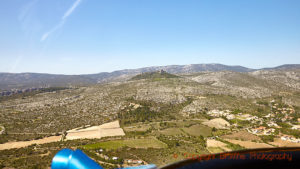 Each year, the Munskänkarna Wine Association in Sweden (probably the worlds’ biggest, with some 25,000 members) chooses a “Wine Village/Wine Region of the Year”. For 2020, Roussillon in southern France was recently elected. A good choice we think. Roussillon is often lumped together with Languedoc and that can sometimes be justified. But Roussillon has its own history and its own special wine types that differ a great deal from Languedoc. The scenery is spectacular, both the beautiful coast in Collioure and Banyuls and the mountainous inland. It is a part of France that sometimes feels wild and godforsaken. But the wines, both reds and whites, from the poor schist and limestone soils are magnificent, often with a surprising freshness so far south.
Each year, the Munskänkarna Wine Association in Sweden (probably the worlds’ biggest, with some 25,000 members) chooses a “Wine Village/Wine Region of the Year”. For 2020, Roussillon in southern France was recently elected. A good choice we think. Roussillon is often lumped together with Languedoc and that can sometimes be justified. But Roussillon has its own history and its own special wine types that differ a great deal from Languedoc. The scenery is spectacular, both the beautiful coast in Collioure and Banyuls and the mountainous inland. It is a part of France that sometimes feels wild and godforsaken. But the wines, both reds and whites, from the poor schist and limestone soils are magnificent, often with a surprising freshness so far south.
Roussillon is located in the French part of Catalonia, which is noticeable in both language and gastronomy. The great speciality down here, the vin doux naturel, VDN (banyuls, rivesaltes, maury…), are experiencing a revival. These wines must definitely not be overlooked if you visit Roussillon. And they are an exciting alternative to the Christmas port wine.
A global trademark now protects Marlborough in New Zealand
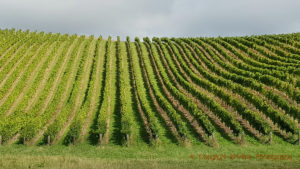 Appellation Marlborough Wine (AMW) was founded in 2018 by a number of wine producers who wanted to protect their region’s reputation, which, they thought, was about to be eroded by cheap bulk wine exports. Now AMW is registered as a trademark also in North America, Asia and Europe. The association has 49 members. Although the focus initially was on sauvignon blanc, AMW can also be used for wines made from other grapes as long as they are grown only in Marlborough and, this is important, the wine is bottled in the country.
Appellation Marlborough Wine (AMW) was founded in 2018 by a number of wine producers who wanted to protect their region’s reputation, which, they thought, was about to be eroded by cheap bulk wine exports. Now AMW is registered as a trademark also in North America, Asia and Europe. The association has 49 members. Although the focus initially was on sauvignon blanc, AMW can also be used for wines made from other grapes as long as they are grown only in Marlborough and, this is important, the wine is bottled in the country.
Marlborough accounts for 69% of New Zealand’s total wine area. The region has 24,037 hectares of sauvignon blanc. There are 123,000 hectares of the grape worldwide. Thus, 20% of the world’s sauvignon blanc. Read more businesswire.com
Travel: But all is not SB in NZ, far from it. Discover all of it on our wine tour to New Zealand in March.
Cognac’s incredible success on export
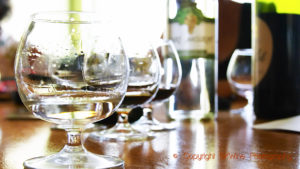 There is a wine region in France that is really doing well at the moment. And that is Cognac. Sales increased in 2018 for the fifth consecutive year. 205 million bottles of cognac were exported. This equates to 98% of the entire production. The United States buys 94 million bottles annually and is the largest export market. Singapore is in second place and China is third. Cognac accounts for almost a quarter of the total value of French wine and spirits exports. Hennessy, owned by the luxury group LVMH, accounts for 46% of all cognac (in other words, around 10% of the value of all wine and sprits export).
There is a wine region in France that is really doing well at the moment. And that is Cognac. Sales increased in 2018 for the fifth consecutive year. 205 million bottles of cognac were exported. This equates to 98% of the entire production. The United States buys 94 million bottles annually and is the largest export market. Singapore is in second place and China is third. Cognac accounts for almost a quarter of the total value of French wine and spirits exports. Hennessy, owned by the luxury group LVMH, accounts for 46% of all cognac (in other words, around 10% of the value of all wine and sprits export).
There is 78,000 hectares of vines in Charente, 120 km north of Bordeaux. This makes Cognac France’s largest white wine region. The main grape is ugni blanc but colombard, folle blanche plus a few more little-known grapes, such as montils and folignan. These are grapes that give low sugar levels but high acidity, which is what you want when you make sprits.
But if you want to drink French digestif at Christmas, choose an Armagnac instead. Armagnac is smaller in every aspect (except taste) and they are struggling on the market at the moment. Their marketing budget is not anything close to the big cognac houses’. Read more: cognac.fr
Mendoza’s new denominations highlights the different terroirs
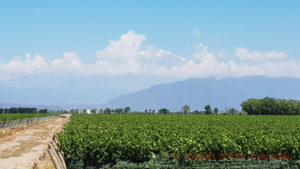 Recently Uco Valley, in the southernmost part of Mendoza, received its fourth geographical designation of origin, identificación geográfica (IG) in Spanish. It is San Pablo, where the vines grow in rocky soil at high altitude, between 1100 and 1700 meters above sea level. The other IGs in Uco are Paraje Altamira, which has a unique limestone soil and was the first terroir to be given an IG, Gualtallary, El Cepillo and Los Chacayes.
Recently Uco Valley, in the southernmost part of Mendoza, received its fourth geographical designation of origin, identificación geográfica (IG) in Spanish. It is San Pablo, where the vines grow in rocky soil at high altitude, between 1100 and 1700 meters above sea level. The other IGs in Uco are Paraje Altamira, which has a unique limestone soil and was the first terroir to be given an IG, Gualtallary, El Cepillo and Los Chacayes.
What is unique about these four geographical areas is that their boundaries are based on soil studies, as opposed to political and administrative boundaries that are common in Argentina. Whether consumers will care to learn these new names is hard to say. But it shows that there is a growing interest among ambitious producers to give their wines a local identity. Read more: thedrinksbusiness
Travel: We will certainly visit and explore Uco Valley on the wine tour to Argentina and Chile.
Organic wine fair Millésime Bio continues to grow, next edition on January 27-29
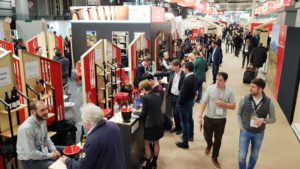 The now well-known wine fair for organic wines, Millésime Bio, will take place on 27-29 January 2020 in Montpellier. All exhibitors must be organically certified. Being under conversion is no longer enough. There are now far too many producers who want to exhibit. The number of exhibitors – 1200 in 2020 – is increasing every year. The show’s growth is a good illustration of the continued popularity and increasing demand of organic wines.
The now well-known wine fair for organic wines, Millésime Bio, will take place on 27-29 January 2020 in Montpellier. All exhibitors must be organically certified. Being under conversion is no longer enough. There are now far too many producers who want to exhibit. The number of exhibitors – 1200 in 2020 – is increasing every year. The show’s growth is a good illustration of the continued popularity and increasing demand of organic wines.
Today, 10% of the French wine area is organic, a threefold increase between 2007 and 2017. The Occitanie region, which includes Languedoc-Roussillon and the South West, has 37% of the total, which means 34,000 organic hectares, according to organizers. The interest in converting to organic shows no signs of slowing down, nor in the other two major wine countries, Italy and Spain. Read more: millesime-bio.com
Read: If you want to know more about organic wines, read the book that explains everything about organic, biodynamic and natural wines.
Miguel Torres celebrates 40 years in Chile
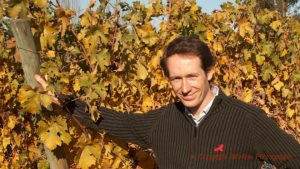 Forty years ago, in 1979, the Spanish Torres family began making wine in Chile, in the small region of Curicó, 200 kilometres south of Santiago. At that time, Chile’s viticulture was still in its infancy and there is no doubt that Torres in various ways helped to accelerate development. Torres introduced new, modern production methods, gave new life to almost forgotten grape varieties, developed organic and sustainable cultivation and fair trade.
Forty years ago, in 1979, the Spanish Torres family began making wine in Chile, in the small region of Curicó, 200 kilometres south of Santiago. At that time, Chile’s viticulture was still in its infancy and there is no doubt that Torres in various ways helped to accelerate development. Torres introduced new, modern production methods, gave new life to almost forgotten grape varieties, developed organic and sustainable cultivation and fair trade.
Today, the Torres family owns 400 hectares of vineyards in Chile, in the Maule and Bío Bío regions. I remember when I met Miguel Torres Maczassek (Miguel A. Torres’s son) on location in Curicó a few years ago. That he liked making wine in Chile was evident. “It’s different here than in Spain, where it’s stricter,” he said. “Here we can work more freely, with new grape varieties, new technology.” He also praised the excellent climate in Chile: “You really have to be a bad winemaker to make bad wine in Chile.” We say congratulations! Read more MiguelTorres
Travel: Discover all the exiting wines in Chile today on the wine tour to Chile and Argentina.
Scandinavian wines in the New York Times and on France 3
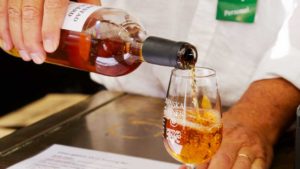 Scandinavian wines have received a great deal of attention in the international press lately. Like most other journalists, Eric Asimov, in his long article in the New York Times, points out that climate change makes it possible to commercially make wine in Scandinavia. But he also admits that this doesn’t make it easy. Climate change also means more and more unpredictable weather.
Scandinavian wines have received a great deal of attention in the international press lately. Like most other journalists, Eric Asimov, in his long article in the New York Times, points out that climate change makes it possible to commercially make wine in Scandinavia. But he also admits that this doesn’t make it easy. Climate change also means more and more unpredictable weather.
Asimov has travelled to Denmark, Sweden and Norway and interviewed growers. Denmark currently has 90 commercial wineries. 15 years ago, they had two. There are around 40 in Sweden. Even Norway has almost a dozen. According to the article, Denmark and Sweden have the EU’s permission to grow around 400 hectares. But the high prices of the wines and the, sometimes, debatable quality makes it evident that it is not easy to grow wine in the cool/cold Nordic countries. “People are happy as long as they can produce something that is drinkable,” says Sveneric Svensson, chairman of the Swedish Wine Association, in the article. Asimov found that already now some crisp, structured wines with fresh acidity are made in Scandinavia. Read more about Scandinavian wines here nytimes
The French television channel France 3 has also discovered Swedish wine in a feature called “Sweden, the other wine country”. French wine producer will listen with envy to one of the comments, “in Sweden people even pay to participate in the harvest”. In France, recruiting harvesters is more and more difficult.
BKWine Magazine has also recently featured Swedish wine in an article.
Less herbicides in the Loire and maybe in all of France, at a cost
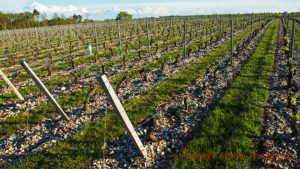 27 appellations in the Anjou and Saumur regions in the Loire Valley have recently published their new rules and regulations. The big news is that they all now prohibit chemical weed removal. These 27 AOPs together have 18,000 hectares.
27 appellations in the Anjou and Saumur regions in the Loire Valley have recently published their new rules and regulations. The big news is that they all now prohibit chemical weed removal. These 27 AOPs together have 18,000 hectares.
In the current climate of sustainability awareness more and more wineries reduce spraying with chemical herbicides. The alternative is to remove weed “mechanically”. Plough. In addition, France has decided that glyphosate, the active ingredient in many herbicides, Roundup not least, should be banned within two years. So, it is undeniably good to be prepared. However, a new French report shows that many wineries will find it difficult to manage without glyphosate. It will be difficult financially for some but even those who can pay for the extra labour will have difficulties, e.g. in finding qualified tractor drivers. Some types of agriculture will probably be granted a postponement of the ban. Read more: vitisphere
However, one should not confuse herbicides with pesticides. Herbicides remove “weed” but pesticides are used against diseases and pests. All wine producers use pesticides. That some wineries “don’t use pesticides or chemicals in the vineyard” is a myth. All spray (more or less) with pesticides.
Read: Read more on this and related issues in the book that explains what organic wine is.
Christmas gift tip 1: Make someone happy with a wine book
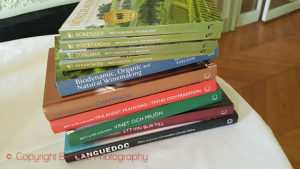 A bottle of wine is never wrong, but a book about wine may be longer lasting. We have written ten wine books, about Languedoc-Roussillon, Bordeaux, Champagne, Tuscany, Piedmont, Burgundy, all of France, how to grow vines and make wine (not a do-it-yourself but a book that explains the technicalities of what winemakers do). But we only – snif, snif – only have one book translated into English. But it is a good one. ”Biodynamic, Organic and Natural Wine Making, Sustainable Viticulture and Viniculture”. It is one of the few books (the only one?) that aims to explain what organic wine is. It is not a book that tells you “this is the best”. Instead it explains what organics is (and a bit about bio-dyn and natural) so that you can decide for yourself if it is good or bad. More info and links to buy it here: Biodynamic, Organic and Natural Winemaking; Sustainable Viticulture and Viniculture.
A bottle of wine is never wrong, but a book about wine may be longer lasting. We have written ten wine books, about Languedoc-Roussillon, Bordeaux, Champagne, Tuscany, Piedmont, Burgundy, all of France, how to grow vines and make wine (not a do-it-yourself but a book that explains the technicalities of what winemakers do). But we only – snif, snif – only have one book translated into English. But it is a good one. ”Biodynamic, Organic and Natural Wine Making, Sustainable Viticulture and Viniculture”. It is one of the few books (the only one?) that aims to explain what organic wine is. It is not a book that tells you “this is the best”. Instead it explains what organics is (and a bit about bio-dyn and natural) so that you can decide for yourself if it is good or bad. More info and links to buy it here: Biodynamic, Organic and Natural Winemaking; Sustainable Viticulture and Viniculture.
Christmas gift tip 2: An unforgettable wine tour
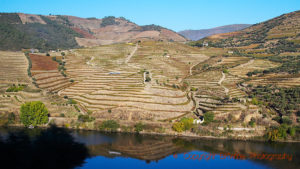 A wine tour is so much more than a “regular” tour or a normal holiday. A wine tour with BKWine is a unique experience where you get to meet the people behind the wine, enjoy the beautiful nature and of course also savour many good wines and top-quality food. It is a gift that will be remembered for a long time, especially if you are two travelling. We can also arrange a nice gift card if we get some time to do it.
A wine tour is so much more than a “regular” tour or a normal holiday. A wine tour with BKWine is a unique experience where you get to meet the people behind the wine, enjoy the beautiful nature and of course also savour many good wines and top-quality food. It is a gift that will be remembered for a long time, especially if you are two travelling. We can also arrange a nice gift card if we get some time to do it.
You will find our whole range of fantastic wine tours here.
Features
Features that we have published during the past month, with lots of reading for you.
Worldwide wine production in 2019 is back to long term average | Per on Forbes
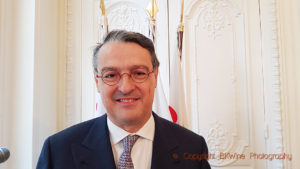 The world’s total wine production in 2019 is estimated to be 263 million hectolitres (26.3 billion litres, within a span of 258 to 267 Mhl). This is just slightly below the average global wine production over the last ten years of 270 Mhl.
The world’s total wine production in 2019 is estimated to be 263 million hectolitres (26.3 billion litres, within a span of 258 to 267 Mhl). This is just slightly below the average global wine production over the last ten years of 270 Mhl.
However, it is a drop of 10% compared to the previous year, but 2018 saw a very big wine production of 294 M hl. 2018 was almost a record size harvest.
Compared to 2017, two years ago, 2019 is an increase with 6%, but 2017 was the smallest harvest in a long time.
Read more about the world’s wine production in Per’s article on BKWine Magazine originally published on Forbes: World wine production is back to the long-term average in 2019 | Per on Forbes.
A true story: Life as a small wine importer
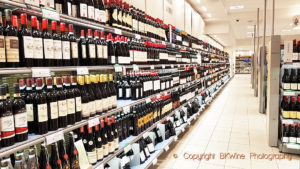 “Systembolaget, the Swedish wine and spirits monopoly, usually boasts its wide range of products, but as is well known, the majority of all their listed products, especially quality wines, are the result of the work of private importers. Of the approximately 18,000 items the company offers, only about 2,500 are in the “regular range”. The majority can be found in the on-order range (often called “BS” after its Swedish abbreviation). Who is it then that create this diversity of wines? Well, it is, of course, the private importers of varying sizes. But for many smaller players, the on-order range has become increasingly difficult to manage, with demands from the Systembolaget for expensive stock-keeping and inventory systems, high fees and a lot of bureaucracy. More and more people are leaving the Systembolaget channel and are either content to sell only to restaurants (which do not go through Systembolaget) or start with e-commerce.”
“Systembolaget, the Swedish wine and spirits monopoly, usually boasts its wide range of products, but as is well known, the majority of all their listed products, especially quality wines, are the result of the work of private importers. Of the approximately 18,000 items the company offers, only about 2,500 are in the “regular range”. The majority can be found in the on-order range (often called “BS” after its Swedish abbreviation). Who is it then that create this diversity of wines? Well, it is, of course, the private importers of varying sizes. But for many smaller players, the on-order range has become increasingly difficult to manage, with demands from the Systembolaget for expensive stock-keeping and inventory systems, high fees and a lot of bureaucracy. More and more people are leaving the Systembolaget channel and are either content to sell only to restaurants (which do not go through Systembolaget) or start with e-commerce.”
Read more in CM Hedin’s story about his life as a wine importer on BKWine Magazine: Life as a small wine importer.
Swedish wine, can it be anything more than a hobby?
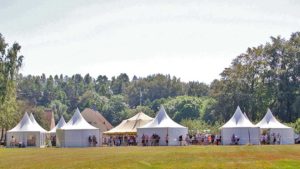 “My wife and I usually go down to Skåne, Scanie, the very south of Sweden, at least once a year to visit grandchildren and other relatives. When we planned the trip for the summer of 2019, I noticed that while we were in Skillinge in Skåne, a wine festival would take place in Skepparp, not far from us. The event looked interesting so why not book both tickets and a table for a Tareq Taylor lunch which was promised to go well with most wines? Friday, July 26 started out warm and we went to Skepparp so early that we were there when it opened and were let in onto one of the fields that constituted the parking space. The fair was held on a field where each producer had their own tent which gave some protection from the sun. In total, there were 9 producers represented.”
“My wife and I usually go down to Skåne, Scanie, the very south of Sweden, at least once a year to visit grandchildren and other relatives. When we planned the trip for the summer of 2019, I noticed that while we were in Skillinge in Skåne, a wine festival would take place in Skepparp, not far from us. The event looked interesting so why not book both tickets and a table for a Tareq Taylor lunch which was promised to go well with most wines? Friday, July 26 started out warm and we went to Skepparp so early that we were there when it opened and were let in onto one of the fields that constituted the parking space. The fair was held on a field where each producer had their own tent which gave some protection from the sun. In total, there were 9 producers represented.”
Read more in Carl-Erik Kanne’s article about Swedish wine on BKWine Magazine: Swedish wine, can it be anything more than a hobby?
A pioneer in northern Greece, the Gerovassiliou Winery
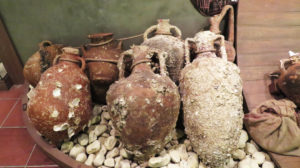 “The location is idyllic, with the entire area overlooking the Thermaikos Gulf and flirting with Mount Olympus when weather permits. Ktima Gerovassiliou participated in the development of Wine Routes of Northern Greece. It is currently one of four members of the Wine Routes of Thessaloniki. The founder and owner Vangelis Gerovassiliou was one of Emile Peynaud’s students. After completing his studies in Bordeaux, Vangelis was invited to work in the Porto Karas Winery. Νοt only did he make the winery famous to the world but more importantly he made a reality of his dream of reviving ancient local Greek grape varieties.”
“The location is idyllic, with the entire area overlooking the Thermaikos Gulf and flirting with Mount Olympus when weather permits. Ktima Gerovassiliou participated in the development of Wine Routes of Northern Greece. It is currently one of four members of the Wine Routes of Thessaloniki. The founder and owner Vangelis Gerovassiliou was one of Emile Peynaud’s students. After completing his studies in Bordeaux, Vangelis was invited to work in the Porto Karas Winery. Νοt only did he make the winery famous to the world but more importantly he made a reality of his dream of reviving ancient local Greek grape varieties.”
Read more about one of Greece’s top producers in Marina Mirzabekian’s article on BKWine Magazine: A pioneer in northern Greece, the Gerovassiliou Winery.
Christmas (gift) tip 3: Eight growers’ champagnes that should make you switch from house champagnes | Britt on Forbes
“’Grower’ champagnes have turned into something fashionable, a small but very exciting niche category. Growers, as opposed to the ‘houses’ (houses are basically the famous names/negotiants that everyone knows), make champagne only from their own grapes. For them, champagne is not just about bubbles, luxury and branding. It is first and foremost a wine. But don’t’ worry, the bubbles are there. And as a bonus, you will get character and personality and sometimes slightly unusual champagnes. I highlight one cuvée for each producer of the eight producers:…”
Find out who these eight are in Britt’s article on BKWine Magazine, originally published on Forbes: Christmas tips: Eight growers’ champagnes that should make you switch from house champagnes | Britt on Forbes.
Travel: Come on a bubbly wine tour to Champagne.
Read: If you did read Swedish you could read our unique award-winning book about growers’ champagnes.
Christmas (gift) tip 4: The life of a wine region in Jon Wyand’s Four Seasons in Cote Chalonnaise | Per on Forbes
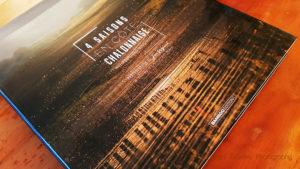 “4 Seasons in the Côte Chalonnaise” (4 saisons en Côte Chalonnaise) is not a wine book like most others. Many wine books tell you about appellations, grape varieties, wineries and lots of other facts. This one does not. (Well, it does, a little bit.) Instead, this book tries to give you a feeling for how life is in the wine region that is called Côte Chalonnaise. We are in the southern part of Burgundy, where they grow mainly Chardonnay and Pinot Noir. But we are far away from the famous appellations in the Côte d’Or, further north, where some of the world’s most famous vineyards, and most expensive wines, can be found. The Côte Chalonnaise is not famous. It is rural. And it is very much the French countryside.
“4 Seasons in the Côte Chalonnaise” (4 saisons en Côte Chalonnaise) is not a wine book like most others. Many wine books tell you about appellations, grape varieties, wineries and lots of other facts. This one does not. (Well, it does, a little bit.) Instead, this book tries to give you a feeling for how life is in the wine region that is called Côte Chalonnaise. We are in the southern part of Burgundy, where they grow mainly Chardonnay and Pinot Noir. But we are far away from the famous appellations in the Côte d’Or, further north, where some of the world’s most famous vineyards, and most expensive wines, can be found. The Côte Chalonnaise is not famous. It is rural. And it is very much the French countryside.
Read more about the book in Per’s article on BKWine Magazine, originally published on Forbes: The life of a wine region in Jon Wyand’s Four Seasons in Cote Chalonnaise | Per on Forbes.
One wine, aged in nine different tanks, a tasting by Domaine Gayda | Per on Forbes
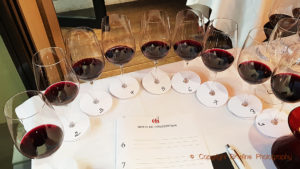 “Does it make a difference? The short answer is: yes, it does make a difference what kind of container is used for ageing. The taste will be different. Winemaking has its fashions and trends, just like any other business. Some of the fashions and trends are maybe of the rather obscure kind. But if you look at it in detail, it can be both fascinating and very important for the character of the wine. What kind of container does the winemaker store (or age) the wine in before it is bottled? Most people might think of oak barrels or steel tanks but there is a plethora of choices for the winemaker.”
“Does it make a difference? The short answer is: yes, it does make a difference what kind of container is used for ageing. The taste will be different. Winemaking has its fashions and trends, just like any other business. Some of the fashions and trends are maybe of the rather obscure kind. But if you look at it in detail, it can be both fascinating and very important for the character of the wine. What kind of container does the winemaker store (or age) the wine in before it is bottled? Most people might think of oak barrels or steel tanks but there is a plethora of choices for the winemaker.”
Read more about this fascinating tasting in Per’s article on BKWine Magazine, originally published on Forbes: Does It Make Any Difference If The Wine Was Aged In Stainless Steel, Concrete, Wood, Or Egg Tank?
Elegant and stylish wines from Parusso in Piedmont
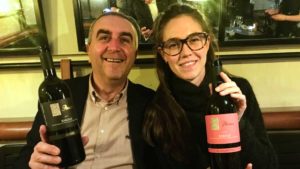 “ ’With knowledge and modern technology you can get an elephant to dance ballet’. The evening’s tasting offered a lot of new insights, nuances and wonderful metaphors. Among other things, the link between bananas and wine. A trip from two to 30 hectares over five generations in Monforte d’Alba. The last two generations sat at our table and gave us a whole new approach to some parts of winemaking. 2021 will be the 50th anniversary of their wine under their own label, but you can with good conscience start celebrating now.”
“ ’With knowledge and modern technology you can get an elephant to dance ballet’. The evening’s tasting offered a lot of new insights, nuances and wonderful metaphors. Among other things, the link between bananas and wine. A trip from two to 30 hectares over five generations in Monforte d’Alba. The last two generations sat at our table and gave us a whole new approach to some parts of winemaking. 2021 will be the 50th anniversary of their wine under their own label, but you can with good conscience start celebrating now.”
Read more in Sven-Olof Johansson’s article on BKWine Magazine: Top-class Piedmont wines from Parusso, welcome to Piedmont’s nobility.
Unusual and original: Local grape varieties, the future for Moldovan wines
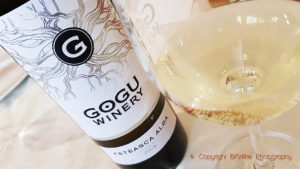 “Local grape varieties can be a strong point for wine countries. The wine enthusiast is more and more looking for the unusual and the unknown. Moldova, in the easternmost part of Europe, is in many ways a new wine country despite having many centuries of wine history. To make its voice heard in a competitive wine world, it would be wise to promote its exciting local grapes and the grape varieties that the country shares with neighbouring Rumania and Georgia. Let’s take a look at some of the exciting and unusual local grape varieties that you can find here in Moldova:…”
“Local grape varieties can be a strong point for wine countries. The wine enthusiast is more and more looking for the unusual and the unknown. Moldova, in the easternmost part of Europe, is in many ways a new wine country despite having many centuries of wine history. To make its voice heard in a competitive wine world, it would be wise to promote its exciting local grapes and the grape varieties that the country shares with neighbouring Rumania and Georgia. Let’s take a look at some of the exciting and unusual local grape varieties that you can find here in Moldova:…”
Read more on these grapes, some that you might not even have heard of, in Britt’s article on BKWine Magazine: Local grape varieties, the future for Moldovan wines.
The changing shape of the New Zealand wine landscape, with Emma Jenkins MW | Britt on Forbes
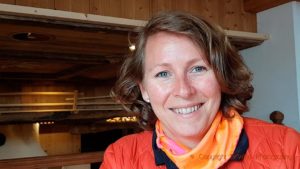 We recently met with New Zealand Master of Wine Emma Jenkins. She has been in the wine business for 20 years and is, of course, very familiar with the New Zealand wine industry. We took the opportunity to ask her a few questions. What has changed over the last 10 years in New Zealand? “That is a great question, actually. What has changed, to my mind is a change in confidence. Previously we thought we needed to prove ourselves to the world. To compare our Pinot Noir to Burgundy etc. Now we have proven that we are capable of producing fine wine, that we have a good terroir.”
We recently met with New Zealand Master of Wine Emma Jenkins. She has been in the wine business for 20 years and is, of course, very familiar with the New Zealand wine industry. We took the opportunity to ask her a few questions. What has changed over the last 10 years in New Zealand? “That is a great question, actually. What has changed, to my mind is a change in confidence. Previously we thought we needed to prove ourselves to the world. To compare our Pinot Noir to Burgundy etc. Now we have proven that we are capable of producing fine wine, that we have a good terroir.”
Read more in Britt’s article, and watch a video with Emma and with some beautiful NZ landscapes, on BKWine Magazine, originally published on Forbes: New Zealand Wines’ Challenges And Opportunities With Emma Jenkins MW | Britt on Forbes.
Travel: Discover the wonderful wine country of New Zealand on a wine tour in March.
Wine tours
Some information about current and future wine tours with BKWine.
South Africa, perfect climate and spectacular scenery | wine tour
In February it is a warm and pleasant summer in South Africa. But it is rarely too hot. Which makes the climate ideal for quality wines. The wines will get balance and structure. Often, South African wines are compared more with European wine than with New World wines. To this perfect climate, we can add spectacular scenery, with several mountain ranges that both criss-cross the wine regions and act as a backdrop to the vineyards. We start our journey with a well-known mountain, the Table Mountain. From there we have a magnificent view of Cape Town and the Ocean. A good start to the journey. We will visit classic wine regions such as Franschhoek and Stellenbosch, but also newcomers like Elgin and Overberg. Our lunches are at the vineyards which give us many opportunities to contemplate different food and wine combinations. In recent years, South African cuisine has gained a very good reputation. You will understand why on the tour.
South Africa, February 15-23, 2020. Book your wine tour to South Africa now!
New Zealand, exciting meetings with wine people | wine tour
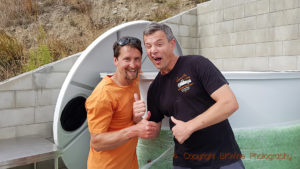 A wine tour is very much about meetings with wine people; it’s not just about the wine. This is also the case on our tour to New Zealand. We will visit around 20 different vineyards (sounds a lot but the pace is very relaxed) and everyone we meet will have something new and interesting to tell us. Sounds incredible, but it is true. The harvest has started so it is busy times both in the vineyards and in the cellars. We want to show you the most well-known regions but also the more unknown ones, which are off the main road, such as for example the exciting Awatere in Marlborough. Some of the most beautiful vineyards in the wine world are on the program. And much more, such as Wellington the capital, geysers in Rotorua, Maori culture, glaciers, seals, and more.
A wine tour is very much about meetings with wine people; it’s not just about the wine. This is also the case on our tour to New Zealand. We will visit around 20 different vineyards (sounds a lot but the pace is very relaxed) and everyone we meet will have something new and interesting to tell us. Sounds incredible, but it is true. The harvest has started so it is busy times both in the vineyards and in the cellars. We want to show you the most well-known regions but also the more unknown ones, which are off the main road, such as for example the exciting Awatere in Marlborough. Some of the most beautiful vineyards in the wine world are on the program. And much more, such as Wellington the capital, geysers in Rotorua, Maori culture, glaciers, seals, and more.
New Zealand, March 9-24, 2020. Book your wine tour to New Zealand now!
Bordeaux, timeless and fascinating | wine tour
 Bordeaux is timeless. It is a region that you happily return to many times. There is always something new to discover. With 7,000 chateaux and over 100,000 hectares of vines, it is one of France’s largest wine regions. We will show you some of the most interesting chateaux where you will learn a great deal about both history and current trends in this fascinating wine region. You will enjoy château lunches of astounding gastronomic level in beautiful settings, with plenty of delicious wines to go with it.
Bordeaux is timeless. It is a region that you happily return to many times. There is always something new to discover. With 7,000 chateaux and over 100,000 hectares of vines, it is one of France’s largest wine regions. We will show you some of the most interesting chateaux where you will learn a great deal about both history and current trends in this fascinating wine region. You will enjoy château lunches of astounding gastronomic level in beautiful settings, with plenty of delicious wines to go with it.
We have two tours to Bordeaux during 2020:
Champagne, immerse yourself in a bubbly world| wine tour
 A 100 % bubbly wine tour where we really immerse ourselves in the fascinating world of champagne. A tour for those who want to learn all about champagne or for those who just love to drink bubbly. Some visits will be to famous houses, big and small, and others to independent growers, makers of the now famous “growers’ champagnes”. We will see some very impressive wine cellars with thousands, sometimes millions of bottles. We will enjoy small villages and beautiful landscape. And you will discover the diversity of champagne. During our days here we will taste many different cuvées and you will maybe even discover styles you didn’t even know existed in Champagne.
A 100 % bubbly wine tour where we really immerse ourselves in the fascinating world of champagne. A tour for those who want to learn all about champagne or for those who just love to drink bubbly. Some visits will be to famous houses, big and small, and others to independent growers, makers of the now famous “growers’ champagnes”. We will see some very impressive wine cellars with thousands, sometimes millions of bottles. We will enjoy small villages and beautiful landscape. And you will discover the diversity of champagne. During our days here we will taste many different cuvées and you will maybe even discover styles you didn’t even know existed in Champagne.
Join us in Champagne, September 16-20, 2020
Sneak peek of wine tour in winter 2021
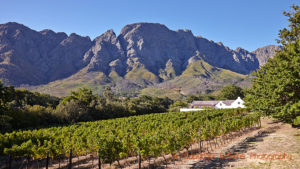 The program for winter 2021 is also starting to be finalized. It will be three magnificent long distance tours, to the southern hemisphere. Three excellent excuses to get away from the dark and cold winter in the north. As if an excuse was needed. These are very special tours that show you a lot of the countries we visit, the wines and the gastronomy.
The program for winter 2021 is also starting to be finalized. It will be three magnificent long distance tours, to the southern hemisphere. Three excellent excuses to get away from the dark and cold winter in the north. As if an excuse was needed. These are very special tours that show you a lot of the countries we visit, the wines and the gastronomy.
The exact dates for South America and South Africa will be announced shortly:
- South America, Chile and Argentina, January
- New Zealand, 18 February-5 March
- South Africa, March
Come back to BKWine Wine Tours soon the see the full details.
Don’t be an egoist! Share with your friends and other wine enthusiasts! Forward the Brief to your friends! Suggest that they sign up for a free subscription !
© Copyright BKWine






